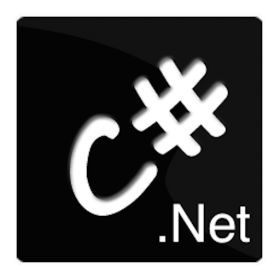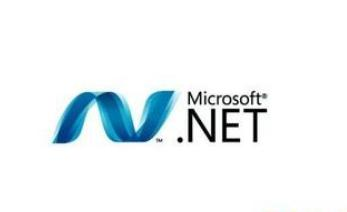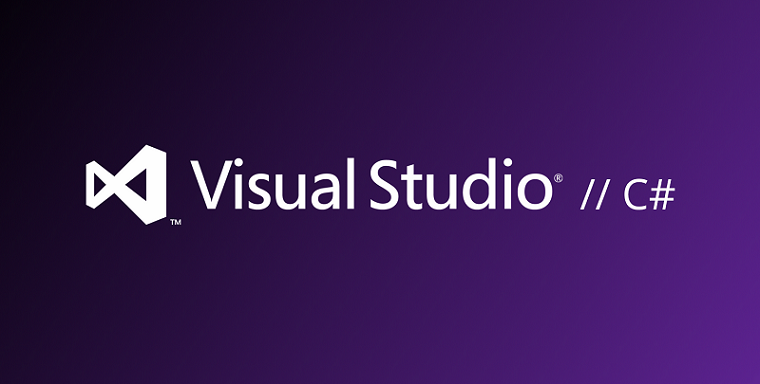10 recommended articles about packing
Content introduction • Overview • What happens behind the scenes when you declare a variable? • Heap and stack • Value types and reference types • Which are value types and which are reference types? • Boxing and unboxing • Performance issues of boxing and unboxing 1. Overview This article will explain six important concepts: heap, stack, value type, reference type, boxing and unboxing. This article will first start by explaining the changes that occur within the system when you define a variable, and then shift the focus to the storage duo: the heap and the stack. Later, we will explore value types and reference types and explain the important basics about these two types. This article will use a simple code to show the performance impact caused by the boxing and unboxing process. Please read it carefully. 2. What happens behind the scenes when you declare a variable? When you define a variable in a .NET application, some block of memory is allocated for it in RAM. This memory contains three things: the name of the variable, the data type of the variable, and the value of the variable. The above is a brief explanation of what happens in memory, but exactly what type of memory your variables are allocated to depends on the data type. There are two types of allocable memory in .NET: stack and heap. In the next few parts
1. A brief discussion on boxing and unboxing core architecture design

Introduction: Introduction • Overview • What happens behind the scenes when you declare a variable? • Heap and stack • Value types and reference types • Which are value types and which are reference types? • Boxing and unboxing • Performance issues of boxing and unboxing 1. Overview This article will explain six important concepts: heap, stack, value type, reference type, boxing and unboxing. This article will first start by explaining the changes that occur within the system when you define a variable, and then shift the focus to the storage duo: the heap and the stack. Later, we will explore value types and reference types and explain the important basics about these two types. This...
2. In-depth understanding of Java native types and wrapper types

Introduction: This article provides an in-depth analysis of Java native types and wrapper types, mainly covering the following four aspects: the basics of native types and wrapper types, literal value concepts and types, and the automatic use of basic types. Casting and casting and automatic boxing and unboxing mechanisms.
3. C# Performance Optimization Best Practices

##Introduction: 1. Use generics to avoid boxing and unboxing operations. The boxing operation will cause GC pressure; if it occurs in a collection, it should be avoided by using a generic collection. For collections of value types, use List instead of ArrayList, and use Dictionary instead of Hashtable. ArrayList h=new ArrayList(); //It is not recommended h.Add(1);List h = new List(); //It is not recommended
##4..NET Six important concepts in: stack, heap, value types, reference types, boxing and unboxing

5.
C# Basic knowledge of basic knowledge (19) Boxing and unboxing of value types (2)

6. C# Basic knowledge of basic knowledge (18) Boxing and unboxing of value types (1) Introduction: It is actually very interesting to understand boxing and unboxing carefully. First, let’s look at why boxing and unboxing occur? 7. C# Basic knowledge of basic knowledge (17) ILiest interface - generics Introduction: Inserting a value type into ArrayList will trigger a boxing operation, and removing a value type requires unboxing, as follows ##8 . Generics in C# Programming 9. Learn C# boxing and unboxing easily 10. [Related Q&A recommendations]: #c# - About the strange phenomenon that occurs when Int and other types are boxed in java What is the process of comparing int and Integer in java? About java’s automatic boxing (autoboxing) and unboxing (unboxing)


 ##Introduction: Easily learn the packaging and unboxing of C#. In the previous article, I briefly mentioned the easy learning of C# packaging and unboxing. This article will give you a more detailed introduction to the easy learning of C# packaging. and unboxing, interested friends can refer to
##Introduction: Easily learn the packaging and unboxing of C#. In the previous article, I briefly mentioned the easy learning of C# packaging and unboxing. This article will give you a more detailed introduction to the easy learning of C# packaging. and unboxing, interested friends can refer to  #Introduction: This article mainly introduces the principles of C# boxing and unboxing through illustrations. The content is very simple. Interested friends can refer to it
#Introduction: This article mainly introduces the principles of C# boxing and unboxing through illustrations. The content is very simple. Interested friends can refer to it
The above is the detailed content of 10 recommended articles about packing. For more information, please follow other related articles on the PHP Chinese website!

Hot AI Tools

Undresser.AI Undress
AI-powered app for creating realistic nude photos

AI Clothes Remover
Online AI tool for removing clothes from photos.

Undress AI Tool
Undress images for free

Clothoff.io
AI clothes remover

AI Hentai Generator
Generate AI Hentai for free.

Hot Article

Hot Tools

Notepad++7.3.1
Easy-to-use and free code editor

SublimeText3 Chinese version
Chinese version, very easy to use

Zend Studio 13.0.1
Powerful PHP integrated development environment

Dreamweaver CS6
Visual web development tools

SublimeText3 Mac version
God-level code editing software (SublimeText3)

Hot Topics
 1376
1376
 52
52
 How to use various symbols in C language
Apr 03, 2025 pm 04:48 PM
How to use various symbols in C language
Apr 03, 2025 pm 04:48 PM
The usage methods of symbols in C language cover arithmetic, assignment, conditions, logic, bit operators, etc. Arithmetic operators are used for basic mathematical operations, assignment operators are used for assignment and addition, subtraction, multiplication and division assignment, condition operators are used for different operations according to conditions, logical operators are used for logical operations, bit operators are used for bit-level operations, and special constants are used to represent null pointers, end-of-file markers, and non-numeric values.
 What is the role of char in C strings
Apr 03, 2025 pm 03:15 PM
What is the role of char in C strings
Apr 03, 2025 pm 03:15 PM
In C, the char type is used in strings: 1. Store a single character; 2. Use an array to represent a string and end with a null terminator; 3. Operate through a string operation function; 4. Read or output a string from the keyboard.
 The difference between multithreading and asynchronous c#
Apr 03, 2025 pm 02:57 PM
The difference between multithreading and asynchronous c#
Apr 03, 2025 pm 02:57 PM
The difference between multithreading and asynchronous is that multithreading executes multiple threads at the same time, while asynchronously performs operations without blocking the current thread. Multithreading is used for compute-intensive tasks, while asynchronously is used for user interaction. The advantage of multi-threading is to improve computing performance, while the advantage of asynchronous is to not block UI threads. Choosing multithreading or asynchronous depends on the nature of the task: Computation-intensive tasks use multithreading, tasks that interact with external resources and need to keep UI responsiveness use asynchronous.
 How to use char array in C language
Apr 03, 2025 pm 03:24 PM
How to use char array in C language
Apr 03, 2025 pm 03:24 PM
The char array stores character sequences in C language and is declared as char array_name[size]. The access element is passed through the subscript operator, and the element ends with the null terminator '\0', which represents the end point of the string. The C language provides a variety of string manipulation functions, such as strlen(), strcpy(), strcat() and strcmp().
 How to handle special characters in C language
Apr 03, 2025 pm 03:18 PM
How to handle special characters in C language
Apr 03, 2025 pm 03:18 PM
In C language, special characters are processed through escape sequences, such as: \n represents line breaks. \t means tab character. Use escape sequences or character constants to represent special characters, such as char c = '\n'. Note that the backslash needs to be escaped twice. Different platforms and compilers may have different escape sequences, please consult the documentation.
 How to convert char in C language
Apr 03, 2025 pm 03:21 PM
How to convert char in C language
Apr 03, 2025 pm 03:21 PM
In C language, char type conversion can be directly converted to another type by: casting: using casting characters. Automatic type conversion: When one type of data can accommodate another type of value, the compiler automatically converts it.
 The difference between char and wchar_t in C language
Apr 03, 2025 pm 03:09 PM
The difference between char and wchar_t in C language
Apr 03, 2025 pm 03:09 PM
In C language, the main difference between char and wchar_t is character encoding: char uses ASCII or extends ASCII, wchar_t uses Unicode; char takes up 1-2 bytes, wchar_t takes up 2-4 bytes; char is suitable for English text, wchar_t is suitable for multilingual text; char is widely supported, wchar_t depends on whether the compiler and operating system support Unicode; char is limited in character range, wchar_t has a larger character range, and special functions are used for arithmetic operations.
 What is the function of C language sum?
Apr 03, 2025 pm 02:21 PM
What is the function of C language sum?
Apr 03, 2025 pm 02:21 PM
There is no built-in sum function in C language, so it needs to be written by yourself. Sum can be achieved by traversing the array and accumulating elements: Loop version: Sum is calculated using for loop and array length. Pointer version: Use pointers to point to array elements, and efficient summing is achieved through self-increment pointers. Dynamically allocate array version: Dynamically allocate arrays and manage memory yourself, ensuring that allocated memory is freed to prevent memory leaks.




